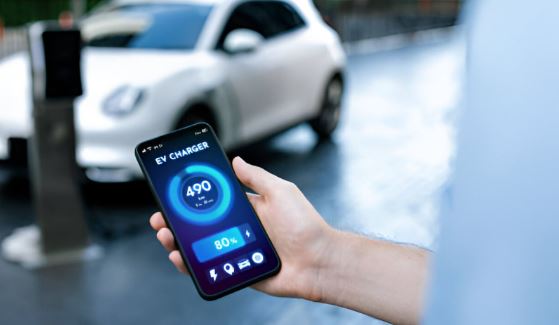Common Problems with EV Charging Apps and How to Fix Them
To charge an electric vehicle, a driver travelling 1000 miles in India in an electric vehicle will need to install 15 different EV charging applications. The owner of an EV will now need to spend more money charging their vehicle and top out the charging app with a minimum amount, so the issues still need to be solved. I haven’t yet talked about the wait times at charging stations. Contacting customer service becomes necessary when the charging app is malfunctioning and won’t begin charging the EV.
Although they are becoming more and more dependable, EV charging station app development occasionally encounters problems that could compromise their functionality or accessibility.
Common Problems with EV Charging Apps with Solutions
The following are some typical issues that may occur at electric vehicle charging stations, along with solutions:
Hardware Issues with the Charging Point
Due to their continuous high load, chargers may eventually fail. Natural wear and tear can also cause connector degradation. One of these scenarios may cause a sluggish or irregular charging process.
For assistance, get in touch with the Chargepoint maker if your gear is still covered by warranty. Elecology is a top brand’s installation and maintenance partner, so we can readily assist with any hardware issues that may arise. After installation, Elecology commissions and registers your charger for warranty; every charging point we install is covered by a three-year manufacturer’s guarantee.
Issues with Charging Station Firmware
The software in EVs and charge points is in charge of keeping an eye on charge levels and guaranteeing proper charging. These systems function flawlessly the majority of the time. Even while these systems appear straightforward, things can occasionally go wrong and they can be very complex.
Frequent firmware difficulties can be rectified by resetting the charging station or EV according to the user handbook. You might need to ask the installer or manufacturer for instructions if there isn’t a manual available. On rare occasions, the Chargepoint’s smartphone app may be the source of the issue. In these situations, try uninstalling and reinstalling the program and verifying your internet connectivity. Occasionally, bugs in Chargepoint software cause problems. Reinstallation won’t always fix the problem in these situations. Alternatively, you might have to notify your charge point provider of the issues or upgrade the firmware.
Poor Wi-Fi Connectivity
For more sophisticated features like scheduled off-peak charging and remote monitoring, certain smart charge points need a Wi-Fi connection. Inadequate connectivity can cause your EV’s charging process to be disrupted and prevent you from fully using your charge point.
In order to verify whether your ChargePoint app can detect the network and establish a connection, first restart your Wi-Fi router and check its settings. Try moving your router or use a Wi-Fi repeater to solve the problem if your connection is unreliable or spotty. Examine your other devices to determine if there are any connectivity problems. Your charge point hardware may be malfunctioning if the rest of your devices function fine. Verify whether your existing coverage still extends to the ChargePoint.
Faulty Switches
The RCD (Residual Current Device) or RCBO (Residual Current Breaker with Over Current) that provides the charge may need to be serviced or replaced if it is charging inconsistently or if the circuit breaker trips frequently while charging.
To inspect your chargepoint and determine the probable reason for the charging problem, give your installer a call. They might advise you to contact a licensed electrician to replace the RCD or RCBO if they determine that there is a problem with these components. If the chargepoint hardware is still covered under warranty, they might have to replace it.
Conflicts with Charging Schedules
You can set up charging schedules for many EVs, which enables you to take advantage of smart tariffs and reduce your electricity expenses. However, when transferring between different EV energy tariffs, employing various tariffs may result in issues with charging compatibility. Your electricity bill may contain inaccuracies as a result, and you could not realize the full benefit of your energy savings as you had anticipated.
Although it could be tempting to use many EV tariffs in order to save more money, the overlapping schedules could cause your energy meter to read incorrectly. It’s best to pick one and stick with it to avoid any potential problems.
Increases in Voltage
The charger will trip due to its safety measures if the voltage at your residence is higher than what is permitted in the UK. The stated voltage and tolerance for an electrical supply in the United Kingdom is 230 volts -6%, +10%. As a result, the permissible voltage range is 216.2 to 253.0 volts. All electrical equipment will deteriorate at high voltage, so if it is above this range, the voltage for the charging point and other electrical devices needs to be adjusted right away.
Tell your distribution network operator that you are currently seeing a spike in voltage. After that, they will dispatch an engineer to lower your electrical system’s voltage.
Limited Charging Stations
One major obstacle with EV charging station app development is the scarcity of charging facilities. Additional infrastructure for charging EVs is required as the market for them expands to keep up with demand. When there are enough charging stations, EV owners may locate convenient places for their cars to be charged. When traveling long distances or to places with limited charging coverage, the requirement for charging infrastructure presents challenges.
Since there are enough gas stations along the route, this can be initially resolved by installing a few charging stations there.
Slow Charging Speed
A typical car can be refueled in around 5 minutes. On the other hand, electric vehicle owners have challenges because it takes longer to recharge the battery. Slow charging speeds can be annoying because they increase the amount of time required to recharge their cars.
Charging speed can be influenced by the kind of charging station, the battery capacity and the charger’s power output. Advances in battery technology and speedier charger development are important to solve this problem.
Range Anxiety
Range anxiety is the concern or uncertainty an EV owner suffers about running out of battery charge before reaching their destination. This worry is increased by a short driving range and a poor infrastructure for charging.
Enhancing the range of electric vehicles (EVs) by means of battery technological breakthroughs and augmenting the accessibility of charging stations might mitigate range anxiety and enhance consumer trust in EVs.
By giving customers accurate information about available EV chargers while traveling, the 1C EV charging app helps minimize range anxiety.
Unstable Charging Infrastructure
EV owners’ faith in the dependability of EV charging is further weakened by infrastructure reliability problems. These problems are out-of-service stations, broken equipment or uneven charging performance. Regular maintenance, quality control procedures and real-time station monitoring are required to guarantee the dependability and accessibility of the infrastructure supporting charging.
However, the question remains: How can a user determine whether or not the adjacent charging station is trustworthy? The 1C EV charging app assists customers by displaying confirmed EV charging stations in the area and other information. The charging infrastructures displayed on the 1C app have been validated and are trustworthy.
Problems with Charging Station Compatibility
Compatibility refers to the user’s app, power needs and plug type. This may lead to ineffective or failed charging, keeping EV owners from making the most of the infrastructure for charging.
Standard charging protocols and improved interoperability between EVs and charging stations can help resolve compatibility difficulties.
Management of Charging Cables
Managing charging wires can be difficult for electric vehicle owners especially when using public charging stations. Problems include tangling cords, not having long enough cables and having trouble handling heavy-duty cables. It annoys consumers and makes charging less enjoyable overall.
Addressing this problem and enhancing the usability of EV charging infrastructure can be accomplished by creating charging stations that are easy to use and equipped with simple wire management solutions.
EV Charging Apps
EV charging apps are essential for improving EV owners’ experiences when charging and for making access to charging infrastructure easier. These apps offer useful data like real-time availability, charging station locations, cost and navigation support. Enhancing the functionality, usability and dependability of EV charging apps can facilitate the charging process and offer customers increased convenience and comfort.
There are already many electric vehicle software development service providers available and each one has a charging app of its own. The user is now faced with a dilemma since, in order to refuel their electric vehicles and pay for it. They must download the appropriate software each time they come across a charger nearby.
Network Connectivity Problem
Communication between EVs and charging stations can be disrupted by network connectivity issues such as spotty internet or cellular reception, causing charging failures or delays. Improving network infrastructure and putting backup plans in place, including offline charging authentication techniques. It will resolve network connectivity problems and give EV owners a flawless charging experience.
Payment Challenges
Convenient payment for charging services might be challenged for electric vehicle owners by payment processing issues, such as obsolete payment systems, incompatible payment methods or convoluted payment procedures. To solve payment issues and improve the user experience at charging stations, it is crucial to streamline payment procedures, provide a variety of payment choices, and guarantee safe and dependable transaction processing.
Conclusion
Thankfully, as EV technology is advancing, such issues should become less frequent. Understanding potential challenges can help you select an EV charging app development company that can address them effectively.
While modern EV charging stations are generally safe, complex issues may require qualified experts to investigate. So you can have expert assistance for troubleshooting procedures that are ineffective in resolving your issue to ensure safe and efficient charging for your Electric Vehicle.


